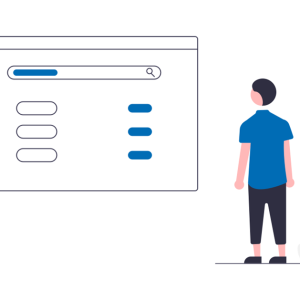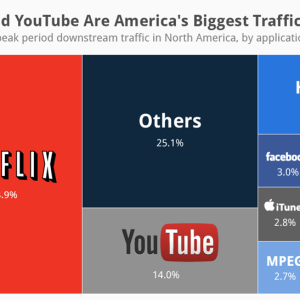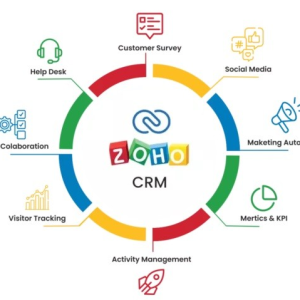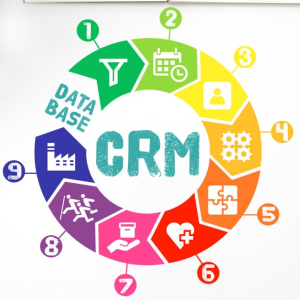Introduction
Backlinks are one of the most important ranking factors in Google’s algorithm. A backlink is created when one website links to another. The more high-quality backlinks a website has, the higher it will rank in search engine results pages (SERPs).
However, not all backlinks are created equal. Some backlinks, like those from spammy or low-quality websites, can hurt your website’s ranking. That’s where disavowing backlinks is important, and with the help disavow tool.
The disavow tool is a way for you to tell Google that you don’t want certain backlinks to count towards your website’s ranking. It is a great way to clean up your link profile and get rid of any spammy or low-quality links. In this guide, we’ll explain everything you already know and everything you need to know on how to disavow links.
What Are Backlinks?
In the domain of internet networking and website optimization, a curious phenomenon known as backlinking has emerged. This practice involves one website endorsing and linking to another website’s content. As an example, think of a scenario where a website dedicated to coffee links to a blog post titled “How to Make a Perfect Cup of Coffee.” This link is what creates what is called a backlink.
But what makes backlinks so important? Well, it all simmers down to how Google perceives the quality of a website. You see, the number and caliber of backlinks a website receives play a pivotal role in determining its position in the SERPs (Search Engine Results Pages). For instance, a website that garners an array of top-notch backlinks is more likely to attain a higher rank in the SERPs. Conversely, a website plagued by a barrage of substandard or spammy backlinks is bound to suffer a lower SERP ranking.
High-quality backlinks are like gold. They can help improve your website’s ranking in the search engines, while low-quality ones will only hurt it!
Why Are Some Backlinks “Bad”?
Not all backlinks are good, some can hurt you and make ranking more difficult which means they’re called “bad” or “spammy” ones!
Bad backlinks are created by using black-hat SEO techniques, such as:
Buying links: This is when someone pays for a link to be placed on another website. Google guidelines explicity mention this as a black hat SEO is will get your website penalized if found.
Link farms: These websites only fish users with thousands of links. They usually have low-quality content, and they can hurt your website’s ranking.
Reciprocal links: These are when two websites agree to link to each other. They offer no value to the reader, and they can hurt your website’s ranking.
Misdirected links: When another website falsely links to your website without any relevant content to merely promote their site, these are called misdirected links. I.e, a website about coffee links your website about cats to their post to gain attention, this is considered as misdirected link.
There are many other ways to create bad links and it’s important to be aware of them so you can avoid them! Check out our guide “SEO Practices: Best To Worse Explained [White Hat, Black Hat, Grey Hat, Negative SEO]” to know more about blackhat SEO.
How to Check If You Have Bad Backlinks
The first step in disavowing backlinks is to check if you have any bad links.
1. Google Search Console
There exist multiple ways to examine the backlinks of a website. One such method is via the Google Search Console, formerly known as Webmaster Tools. To begin, one must access their account and navigate to “Search Traffic” and then “Links to Your Site.” There, a comprehensive roster of websites linking to your own website is available for inspection. Each website can be selected to reveal more detailed information regarding the links, including the anchor text and the date of its initial discovery.
2. Moz Open Site Explorer
Moz’s Open Site Explorer, necessitates inputting your website’s URL to unlock a treasure trove of information regarding every website linking to your website.
3. Majestic
Majestic, a tool that boasts a unique algorithm for backlink analysis. Employing this tool demands that one input their website’s URL, culminating in a comprehensive dossier of websites that bear links to your website. This technique is comparable to the preceding methodologies but harnesses the prowess of Majestic’s specialized algorithm to accomplish the task.
4. Ahrefs
Ahrefs technique involves submitting one’s website URL to the tool, which then generates a list of all websites that link to it.
5. Google Analytics
It is also worth noting that Google Analytics can be a potent tool for scrutinizing not only backlinks but also the traffic that these links are generating for your website. This involves logging into one’s Analytics account and navigating to “Acquisition” and then “All Traffic.”
Here, a detailed overview of all websites that have linked to your website can be viewed, including the anchor text and the date of the link’s initial detection.
Now that you know how to check your backlinks, the next step is to disavow them!
What Is The Disavow Tool?

The disavow tool is a tool that allows you to tell Google not to take certain backlinks into account when they are determining your website’s ranking. This is useful if you have a lot of low-quality or spammy backlinks pointing to your website.
Important Steps to Take Before Disavowing Links
Before you disavow any links, there are a few important things to keep in mind:
1. Check If The Links Are Bad
Firstly, you should make sure that the link you are going to disavow is genuinely bad. This is essential because, just because a website is not popular, new, or have low quality content, does not make the link bad. Therefore, you need to check before you submit the link to disavow.
2. Try To Remove The Links Manually
If these links can be removed manually or by contacting the website owner, then it not be a hassle, submitting the links to disavow, you can rather remove them this way to ensure your time is saved.
3. Keep A Record Of The Links You Disavow
The third thing you need to do is to keep a record of the links you disavow. This can be a simple text file or an Excel spreadsheet.
4. Only Disavow The Worst Links

And last but not least, you should only disavow the worst links. There’s no need to disavow all of your backlinks. Just the really bad ones.
Note: In most cases, links from high-quality sites will be trusted by Google without additional guidance, so most websites don’t need to use this tool.
How To Use The Disavow Tool
The disavow tool is a way for you to tell Google that you don’t want certain backlinks to count towards your website’s ranking. To use the disavow tool, you first need to create a list of links to disavow. To do this, you can either use a text editor like Notepad or a spreadsheet program like Excel.
Once you have your list of links, the next step is to upload it to the disavow tool. To do this, log into your Google Search Console account and click on “Search Traffic” and then “Links to Your Site.”
Next, click on the “More” button and then select “Disavow links.”
As you prepare to advance to the subsequent page, kindly heed the warning message conspicuously displayed: “This is an advanced feature and should only be used with caution.” Take a moment to peruse the message, after which you can confidently initiate the process by activating the “Disavow Links” button.
Upon completing the preceding step, an opportunity to upload a comprehensive document comprising all the links you wish to disavow shall manifest on the ensuing page. You may either generate this document autonomously or utilize Google’s Link Disavow Tool, a utility that proficiently simplifies the process.

It is essential to ensure that your document is readily available and appropriately configured before executing the subsequent step. This involves selecting the “Choose File” button to access the file from your computing device. Once done, consummate the process by selecting the “Submit” button to upload the file, thus finalizing the procedure.
And that’s it! You have now disavowed all of the links in your file. It may take some time for Google to process the file and for the changes to take effect, so be patient.
To confirm that you have disavowed the links, you can go back to the “Links to Your Site” page in Google Search Console and click on the “More” button. If you see a message that says “Disavowed: Yes,” then you know the disavowal has been processed. You will also see a toxic score next to each link, which is a measure of how spammy the link is.
Note:
I’m sorry to say that the disavow links tool doesn’t work with Domain properties. If you have a domain property, this page won’t be able to help get rid of those pesky backlinks!
Common Questions About The Disavow Tool
1. How long does it take for the disavowal to take effect?
It can take anywhere from a few days to a few weeks for the disavowal to take effect. Google has to process the file and then re-crawl all of the links in it. So be patient!
2. Can I disavow an entire domain?
Yes, you can disavow an entire domain, but I don’t recommend it. The only time I would ever do this is if the entire domain is spammy and there’s no way to get rid of the links.
3. What if I accidentally disavow a good link?
If you accidentally disavow a good link, don’t worry! Just submit another file with that link removed and Google will re-crawl it and take it into account.
4. What is the difference between “disavowing” and “nofollowing” a link?
When you “disavow” a link, you are telling Google that you don’t want that link to count towards your website’s ranking. When you “nofollow” a link, you are telling Google that you don’t want it to follow the link and pass along PageRank.
5. Should I use the disavow tool if I have a manual penalty?
If you have a manual penalty, then you should use the disavow tool. This will help Google to understand which links are bad and which ones are good.
6. What happens if I don’t use the disavow tool?
If you don’t use the disavow tool, then Google will continue to take into account all of the links pointing to your website, even the bad ones. This can hurt your website’s ranking and may even result in a manual penalty.
7. I think someone is trying to hurt my website with bad links. What should I do?
If you think someone is trying to hurt your website with bad links, the first thing you should do is create a list of all of the suspicious links. Once you have that list, you can upload it to the disavow tool and Google will ignore those links.
8. I received a message from Google saying that my website has unnatural links. What does that mean?
If you received a message from Google saying that your website has unnatural links, it means that Google has found links pointing to your website that they consider to be spammy or low-quality. These links can hurt your website’s ranking, so it’s important to remove them.
Conclusion
Maintaining an immaculate backlink profile is no mean feat. Despite exerting every effort to curate high-quality content and secure links, a horde of nefarious entities continues to taint the virtual space with their spammy websites, hellbent on sabotaging your website. This is where the disavow tool enters the fray, enabling you to beseech Google to disregard all deleterious links pointed towards your website. This ingenious mechanism fosters enhanced ranking of your website, safeguarding it against manual penalties.
In case you’re grappling with this predicament of bad backlinks, don’t hesitate to leverage the formidable capabilities of the Disavow tool. It could very well be the panacea to revamping your link profile and fortifying your website’s integrity.
We hope that this guide proved to illuminate your journey. If you’re seeking to embark on SEO efforts or any other digital marketing services, you may consider engaging the services of a professional SEO agency. Alternatively, you may entrust your digital strategy to 12 Channels, a premium digital agency offering bespoke services such as SEO, PPC, social media, web design, and more. Our team of seasoned online marketers stand ready to provide the requisite guidance to enhance your website’s ranking and optimize traffic flow. Take the first step towards revolutionizing your digital presence by contacting us today to explore our myriad services.

























